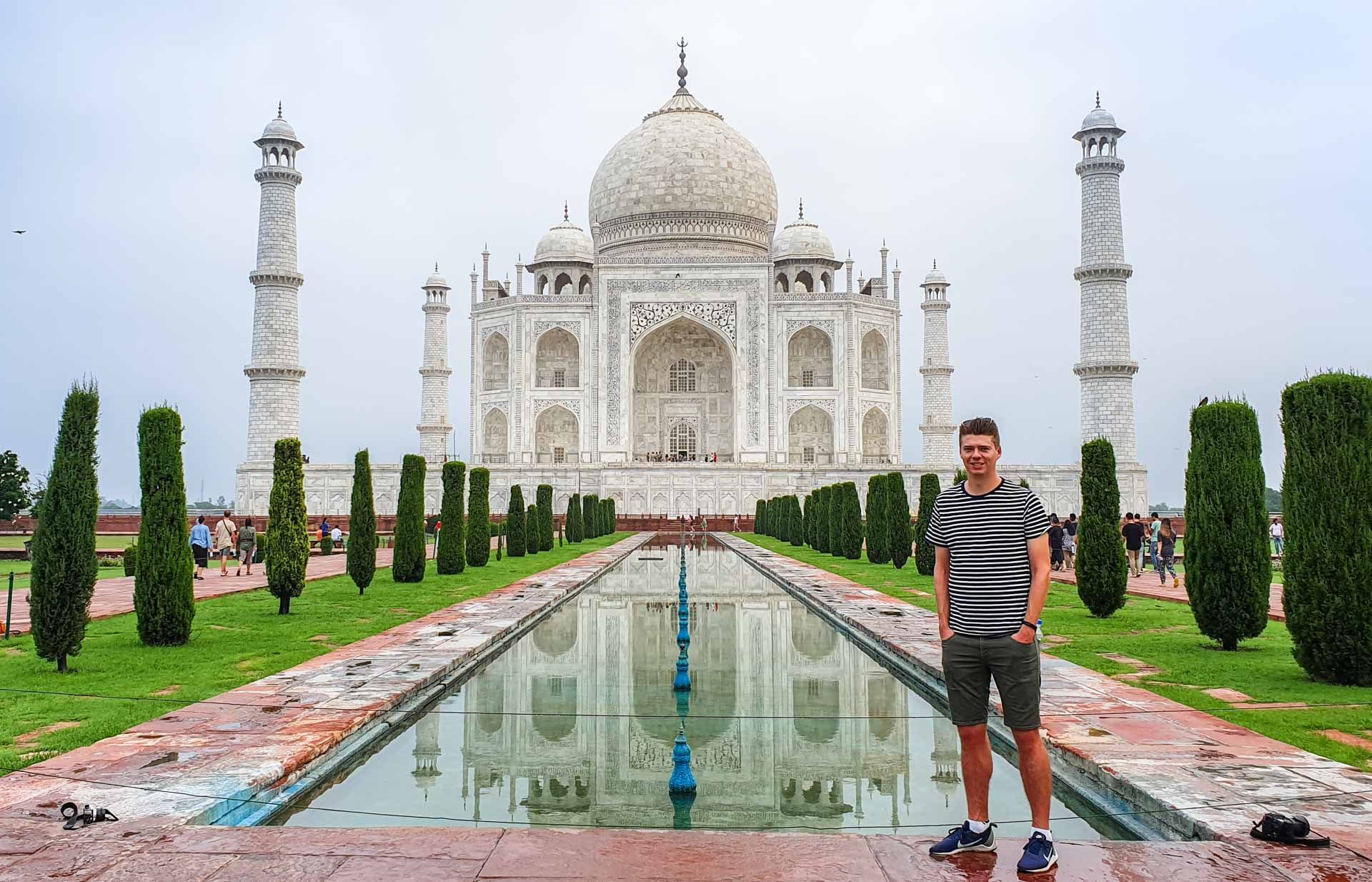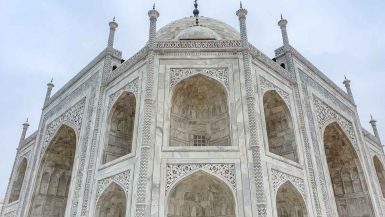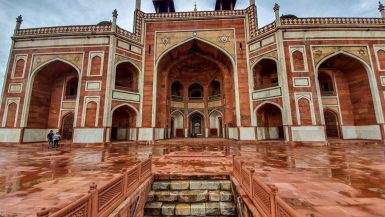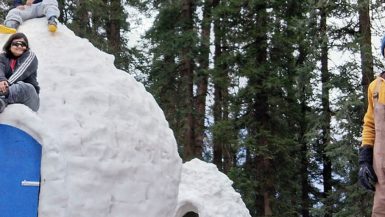The Golden Triangle is one of the most popular routes for visitors to India. The three points of the Triangle are Delhi, Agra and Jaipur, which are about 4-5 hours from each other. I was a little short on time but excited to complete the whole loop. I managed to see so much of India’s Golden Triangle in 5 days, 6 nights and this is the itinerary I followed.
Day 1 — A day of Mayhem in Delhi
There’s a lot to see in Delhi so you’ll want to come up with some priorities. I love history and being a really old city, Delhi has some incredibly historic sites, some of which are very well maintained.
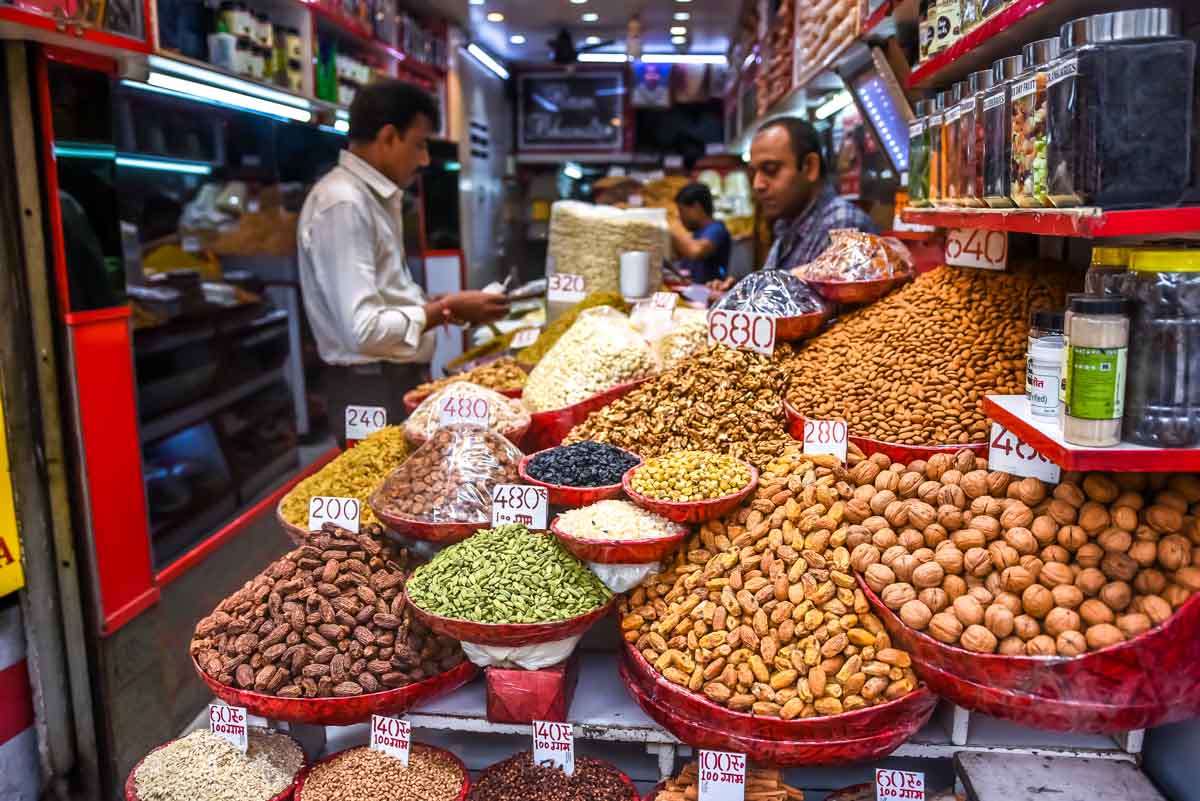
Chandni Chowk
My morning started in Chandni Chowk, which is a large market area with many different types of markets including spices, jewellery, fabrics, wedding and party needs and brass and copper products. The vendors generally cluster in the same areas so there are different bazaars within the Chandni Chowk area for each of these.
Chandni Chowk began life as an elite market with luscious gardens and orderly roads. Nearly 4 centuries later that seems a world away. The market was originally built by Shah Jahan in the mid 17th Century and designed by his daughter Jahanara. It attracted artisans and merchants from all over Europe.
Chandni Chowk is frenetic. The place is overrun by people, cars, rickshaws and the occasional animal. It can be overwhelming to your senses but it is an authentic Delhi experience. If you’re not confident in your ability to navigate successfully, hiring a guide can be a great idea. I had a guide from Delhi Magic Tours and he was great. Not only did he show some of the different bazaars, but we wandered down alleys and onto rooftops that I never would have ventured down on my own. Not that they were dangerous or sketchy, just uninviting and nondescript.
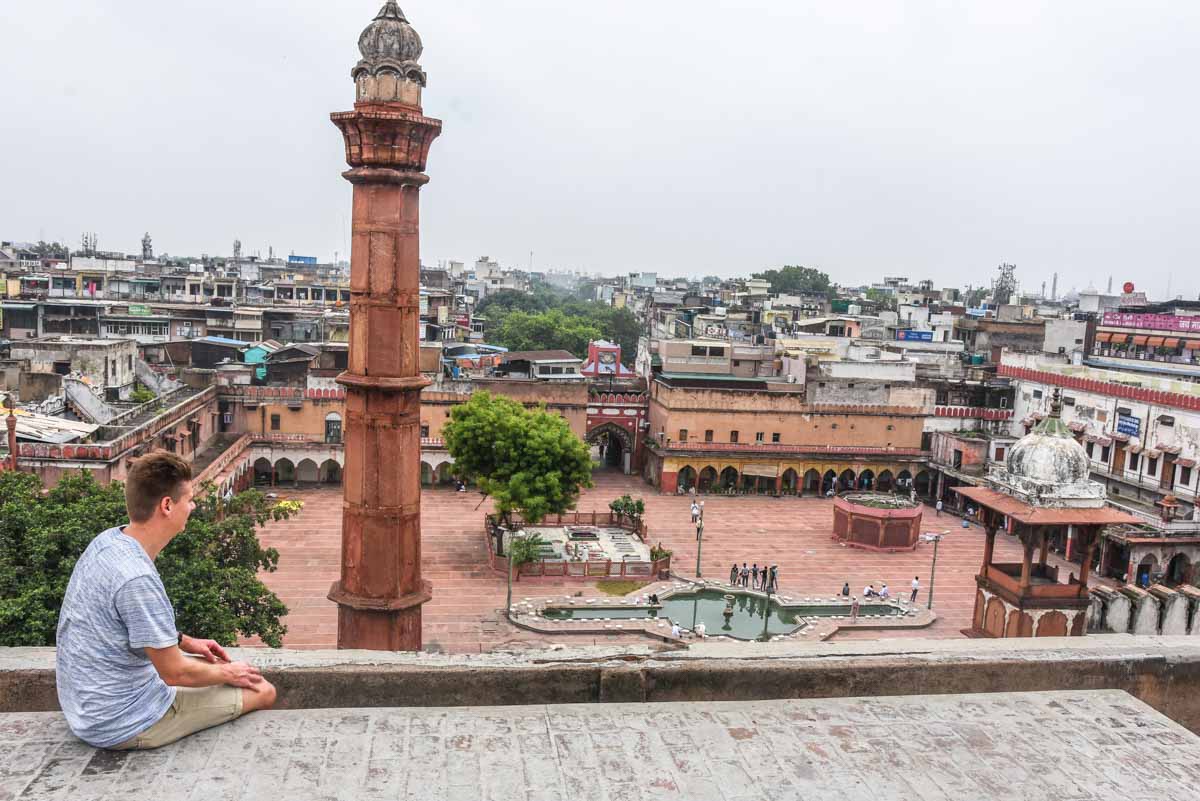
Either way, make sure to swing by Parathe Wali Gali and pick up a paratha, which is a type of flatbread, pounded with spices and vegetables, then fried in oil. It’s delicious.
Humayun’s Tomb
In my Opinion, Humayun’s Tomb is one of the best sights in Delhi. It is an enormous tomb that houses the remains of Emperor Humayun and around 160 members of his family and descendants. The Mausoleum is a grand structure, built primarily of red sandstone and a gargantuan marble dome.
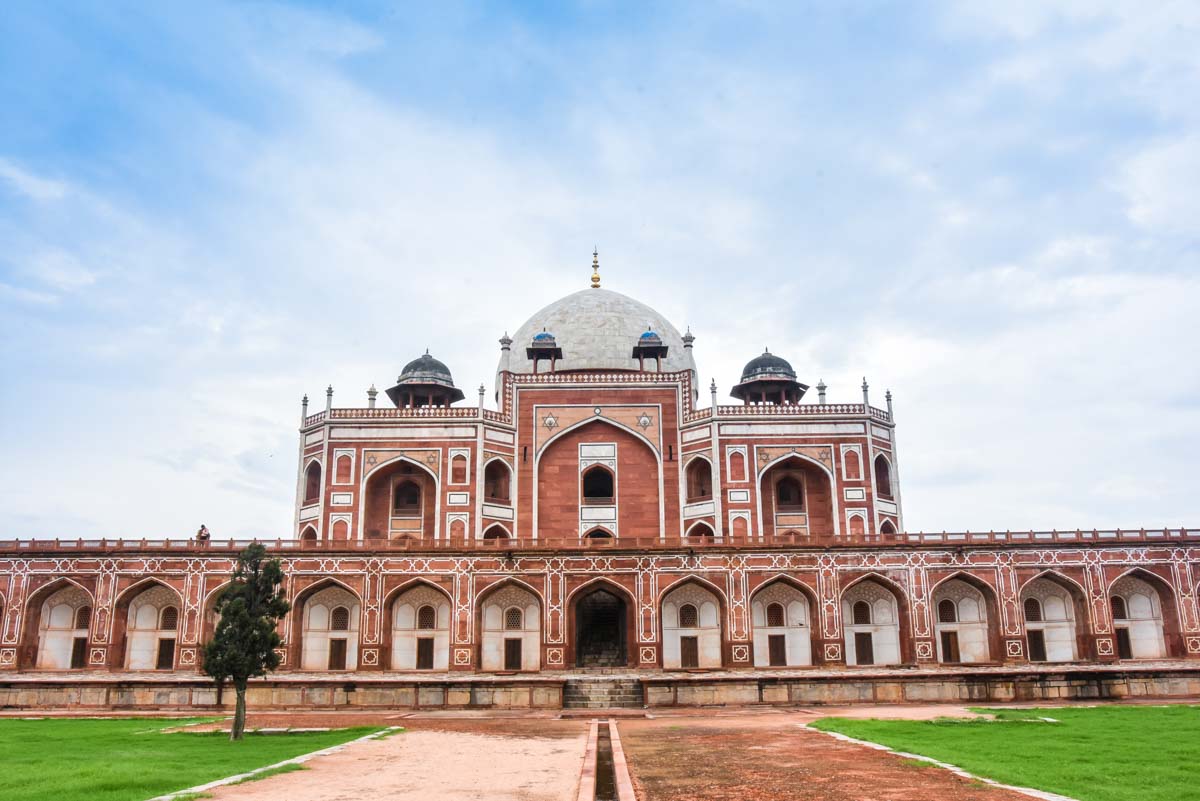
As is common in Mughal architecture, the most notable feature is the symmetry, which can be seen in both the structure and the expansive grounds that stretch out in all directions.
Make sure you swing by the Isa Kahn Niyazi’s tomb on your way in or out too.
Qutb Complex
The Qutb Complex predates the Mughal Empire by some centuries. It was completed in 1368 and comprises 3 major structures: the Quwwut-ul-Islam Mosque, the Qutb Minar, and the Alai Darwaza. The Mosque is largely ruined but many arches and columns remain.
What struck me about the mosque was the incredible detail in the carvings on each pillar and the walls. Each pillar has been artfully decorated; the carvings in the stone are remarkable. Likewise, the patterns on the wall near the arches are exquisite.
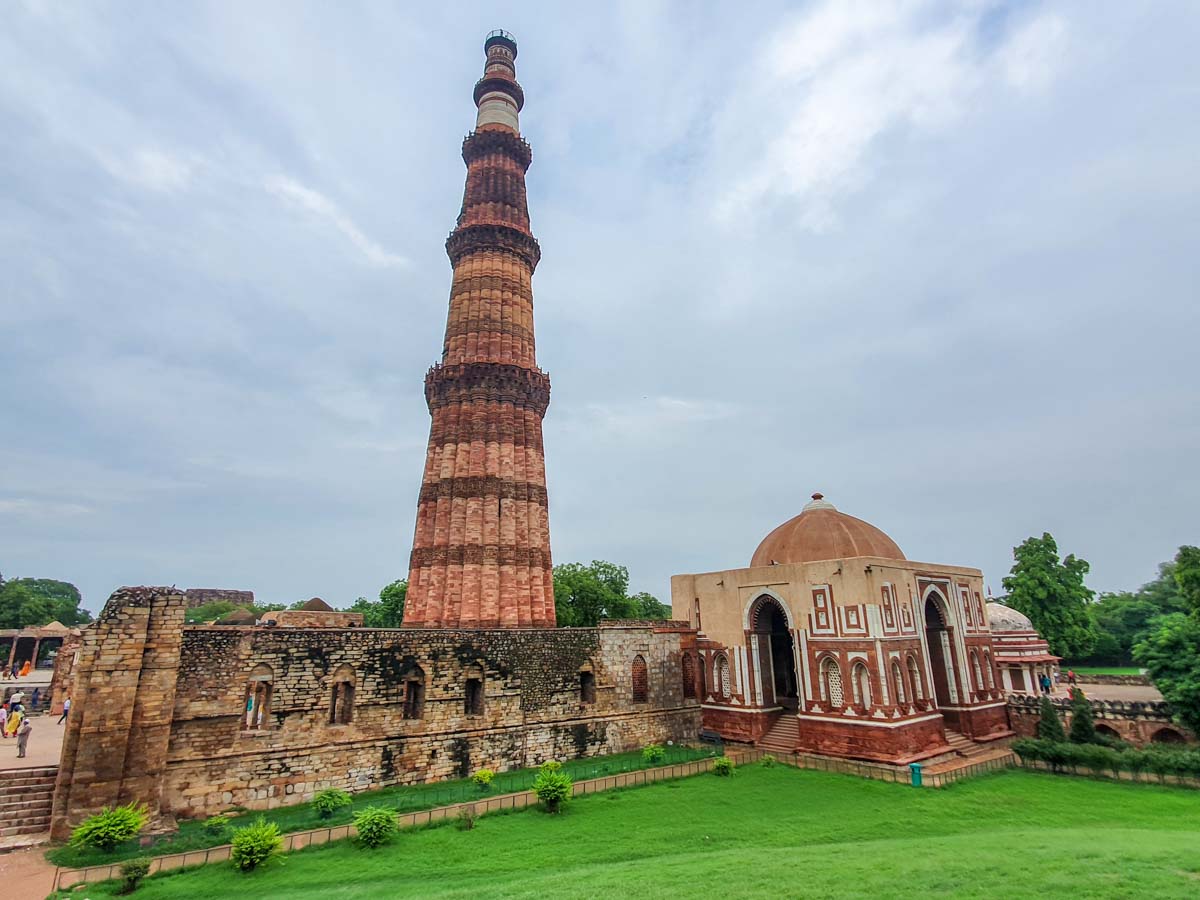
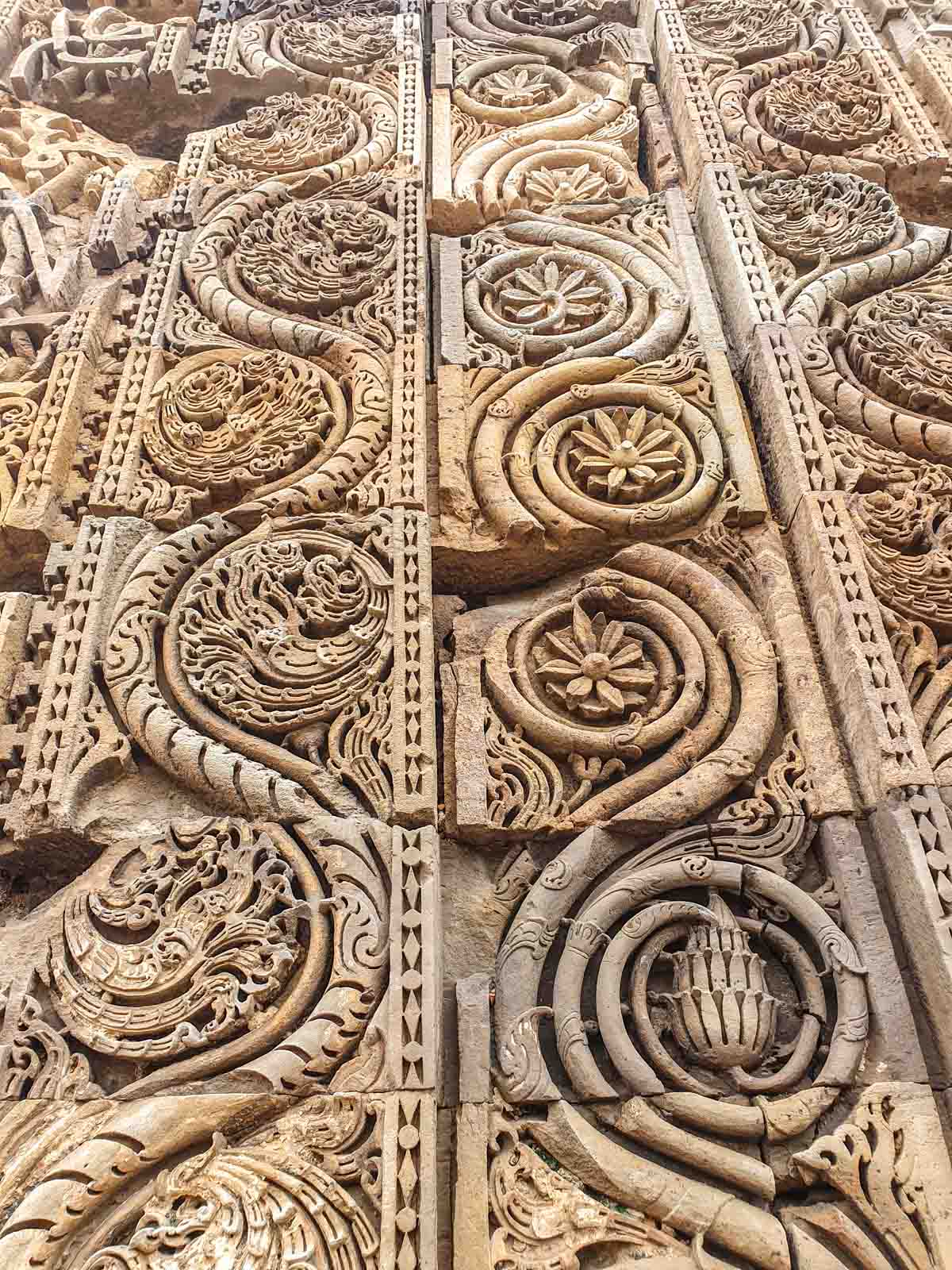
Stay: Sheraton New Delhi
I’ve stayed at quite a few 5 star hotels now and the facilities and service can rarely be faulted. But the Sheraton actually stood out for a few quick reasons. The rain shower was perfect pressure and temperature; you can order Indian specialties at the buffet breakfast like dosa, instead of just eggs your way. The coffee in the room was actually really nice. You have a choice of 6 different types of pillow. And you get a newspaper delivered every morning, whether you are interested in local news or not.
For more detail on Delhi read: One Day Exploring Delhi’s Historic Sights
Day 2 — Onward to Agra
Agra was the second stop on my Golden Triangle tour, the drive to which was about 4 hours and largely uneventful, with the exception of one car roaring past us sideways, careening into the guard rail arse first. Ok yeah, that was a somewhat major event (everyone was fine by the way). Once you get out of Delhi and onto the highway, the traffic really thins out.
I checked into my hotel and headed straight back out for lunch at Pinch of Spice.
In stark contrast to my dinner last night, the restaurant was packed with a waiting list for a table. My murg lababdda was absolutely delicious. A chicken dish, rich and creamy and packed full of local spices. It ranked up there with my butter chicken and I recommend anyone coming to India to try it if you see it on a menu. Pinch of spice was a great place for a meal and not expensive either.
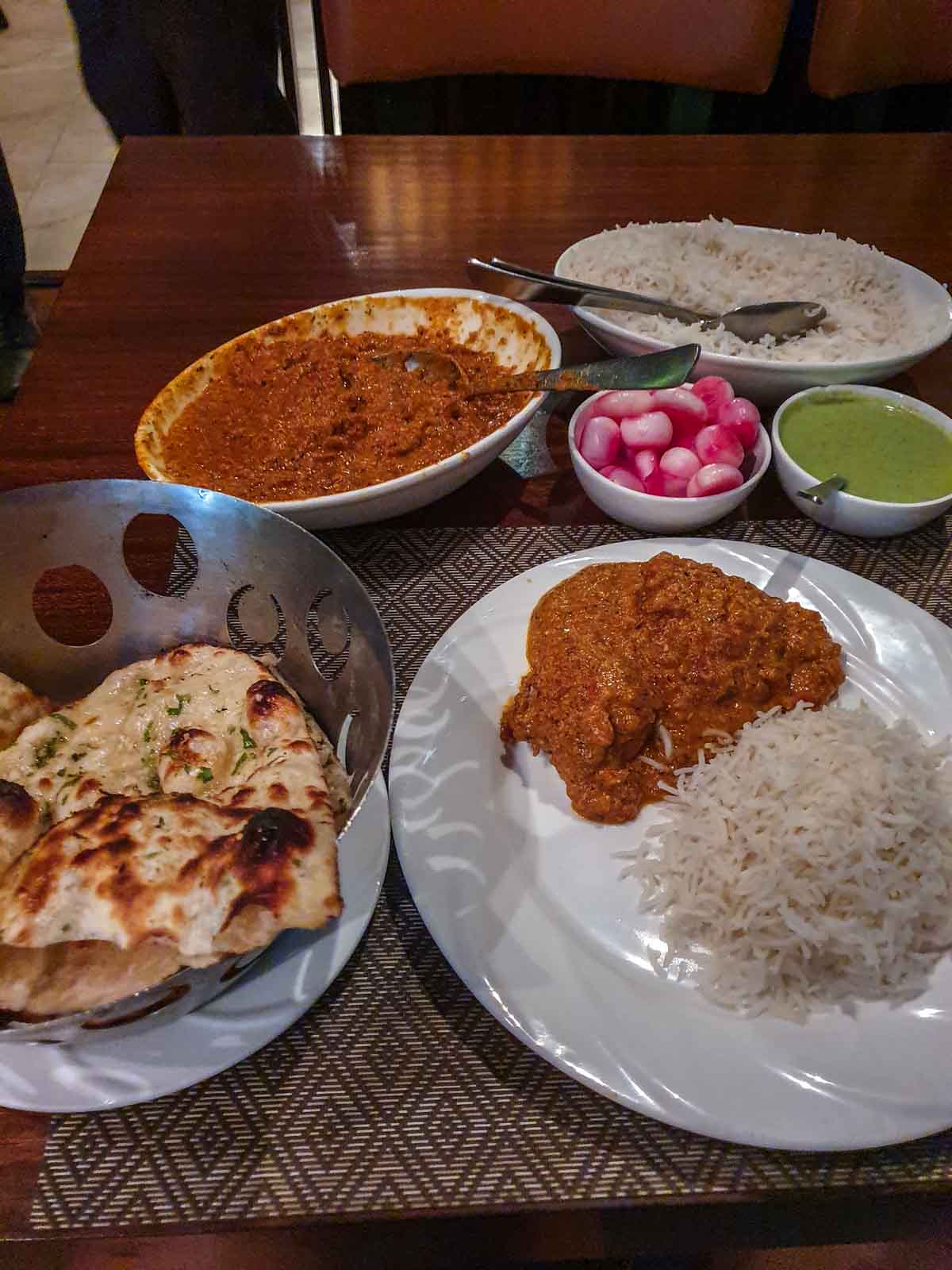
Agra Fort
Agra Fort is the “other” attraction in Agra. Everyone comes to Agra for the Taj Mahal and also sees the Fort. But there is just as much history in the story of the fort as there is the Taj, it’s just not as grand.
The Fort has actually changed hands several times and its structure has changed with it. Much of the buildings inside the fort were built in the mid 16th Century for Admiral Emperor Akbar, from where he ruled the Mughal Empire as his capital, but Shah Jahan (Akbar’s grandson, who built the Taj Mahal) also added some. It was a great irony that shortly after completing the Taj Mahal that Shah Jahan would actually be imprisoned in the Agra Fort, where he had a distant view of the Taj but could never enter it again.
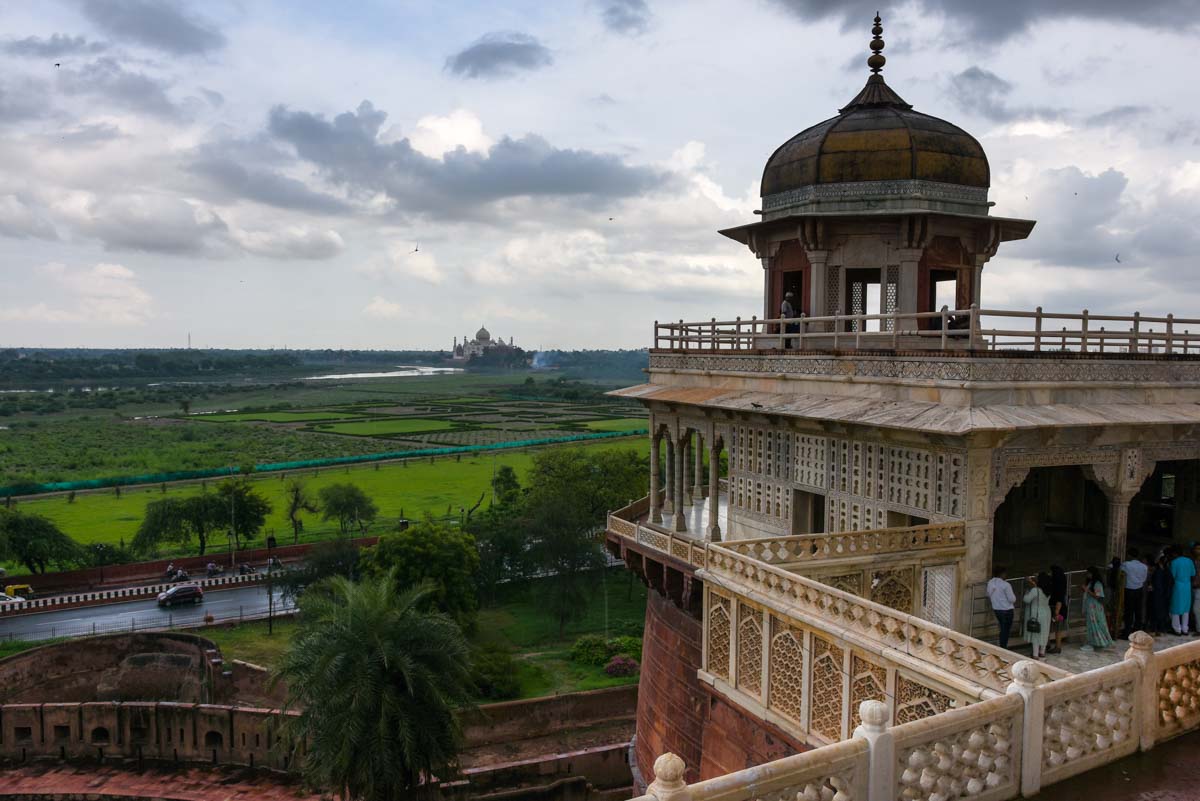
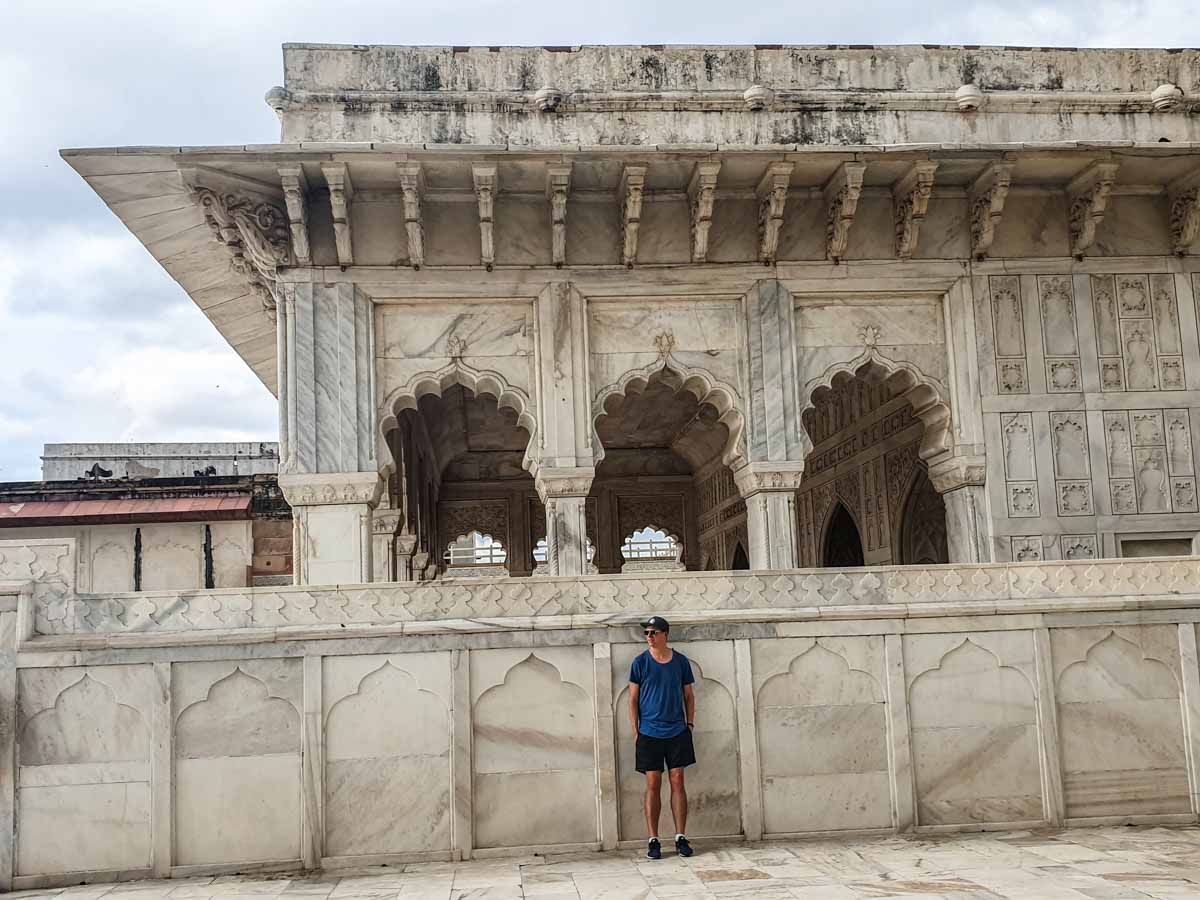
Agra Fort was a magnificent place to wander. It felt more like a walled city, as it was large and full of independent buildings. My favourite was the Anguri Bagh in the photo above, made completely of marble. Many of the gates and buildings in the fort are built from red sandstone and were equally detailed. The Mughals clearly wanted every part of the fort to be special, regardless of its purpose.
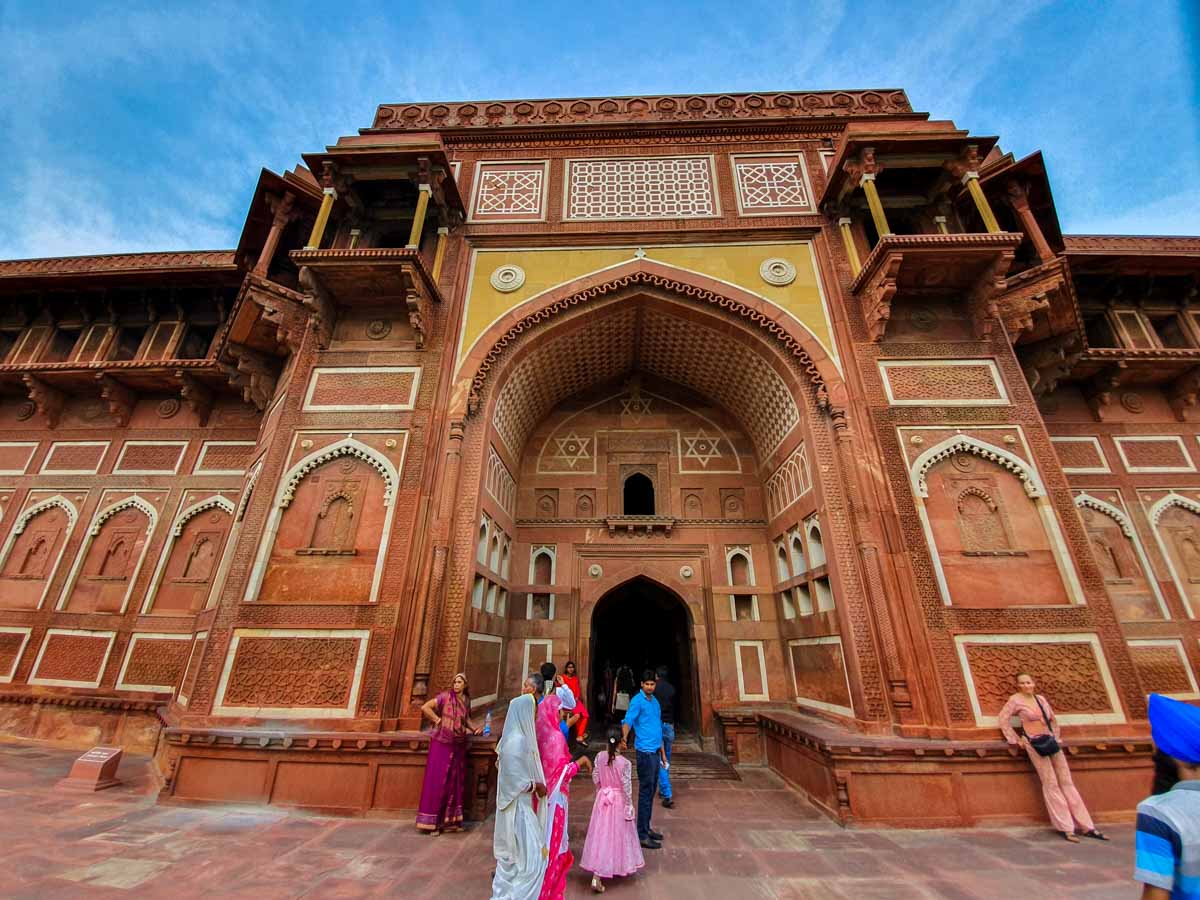
Stay in Agra: Doubletree by Hilton
Located just a few kilometres the Doubletree was a perfect location to stay. The room, the breakfast and service could not be faulted.
Day 3 — Taj Mahal and Fatehpur Sikri
Day 3 in India was the day I’d waited years for. My alarm woke me up right on 5 am and I was straight out of bed. No food. No coffee. Just a guide waiting in the lobby and a boy ready to check something off his bucket list.
Taj Mahal sunrise
The Taj Mahal is one of the greatest structures ever built; a monument to obscene wealth and perhaps the greatest gesture of love in history.
After entering from the more convenient West Gate, we came to the Imperial Gate. The Imperial Gate itself does not get the attention it deserves because it lives in the Taj Mahal’s shadow, but it is itself a monumental structure. If it were located anywhere else in the world (i.e. not next to the Taj Mahal) people would travel to visit it.
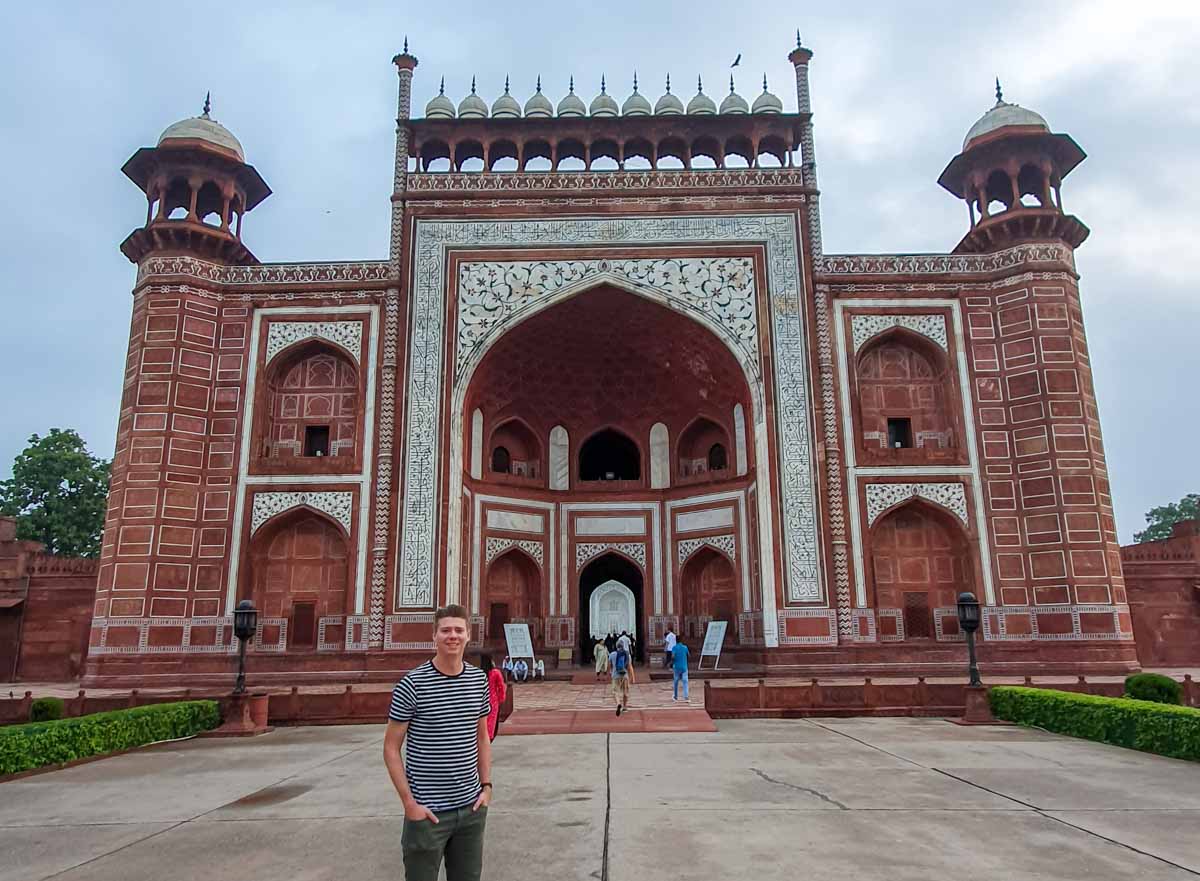
As you walk through the Gate, the Taj is slowly revealed through an archway, perfectly framed in its fullest glory. Although we arrived before 6am we were not alone. However, it certainly didn’t feel overrun. Sometimes iconic monuments can feel rushed and overcrowded but it certainly didn’t feel like that today. The first reason is I am travelling in the low season, being monsoon season. The second reason is that I arrived early; when Indians travel they do not wake up early to go sightseeing.
On the other side of the Imperial Gate is the first real Taj Mahal photograph moment. The challenge is arranging the symmetry perfectly in the photo. You may need to elbow and jostle in order to get the very centre spot. Even harder if you want to be in it.
P.S. Click/tap on this photo above to follow me on Instagram is you like what you see.
A little further down is, I think, the best photo spot. You are a bit closer and a bit lower, which emphasises the size of the Taj, and it is also lower on the pond so you can get some nice reflections (see header image).
The Taj Mahal was built by Shah Jahan as a mausoleum for his 3rd and favourite wife, Mumtaz Mahal. Anyone else have a favourite wife? She died giving birth to their 14th child and on her deathbed she requested 3 things: for Shah Jahan not to remarry, to take care of the kids, and build her a tomb, the likes of which the world has never seen. On that third point in particular I think Jahan went above and beyond.
On either side of the Taj are twin mosques that are identical in every way. One was built as a mosque, the other was simple to complete the symmetry and is a guest house. Much like the Imperial gate both are built in the classic Mughal style architecture and both are exquisite in their own tright. It seems outright absurd to build such a monument for the sake of symmetry, but when you have f*** you money like Jahan did, you can do what you want.
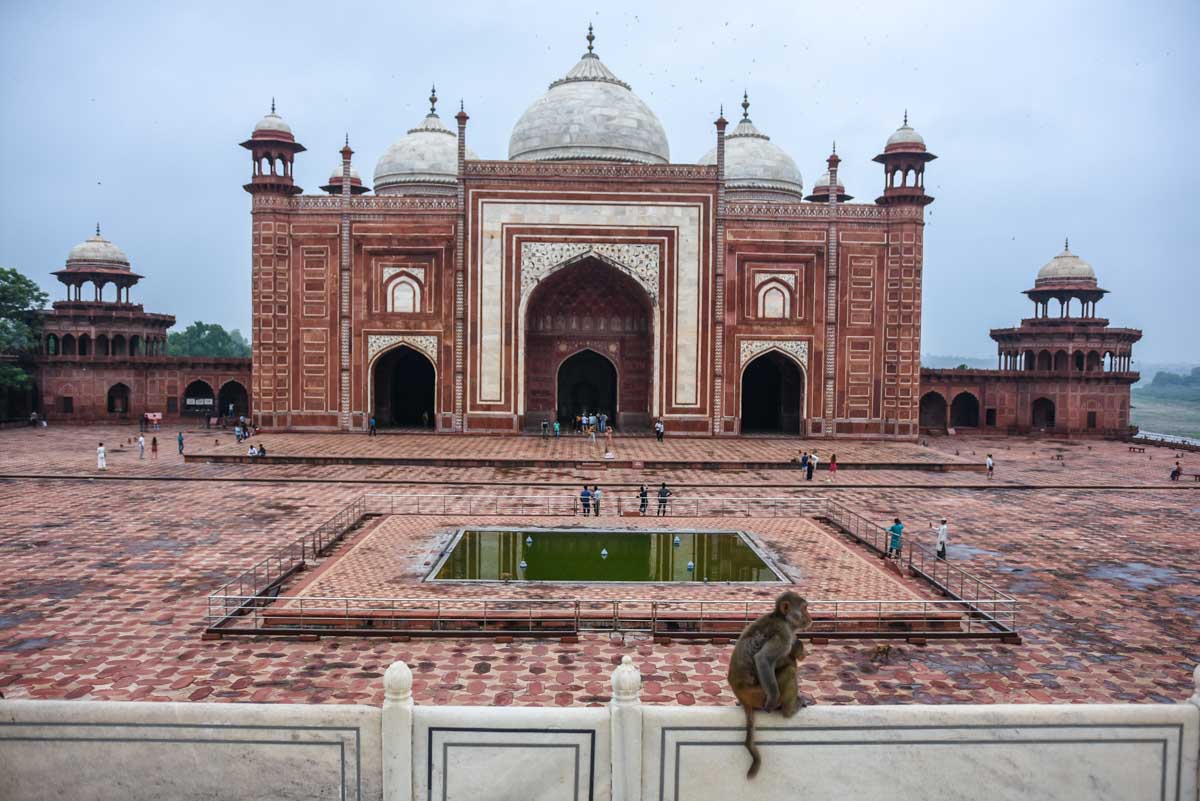
We walked closer to the monument and the white marble just gleamed with beauty. We put our little scratch-free booties over our shoes and walked up to the mausoleum. The genius of the construction was on full show up close. Marble reliefs surround the palace in the shape of wilted flowers and leaves. This is striking because the images have not been carved in to the stone but are raised out of the stone. How you can carve this away from the stone and end up a perfectly flat background is beyond me and absolutely astounding.
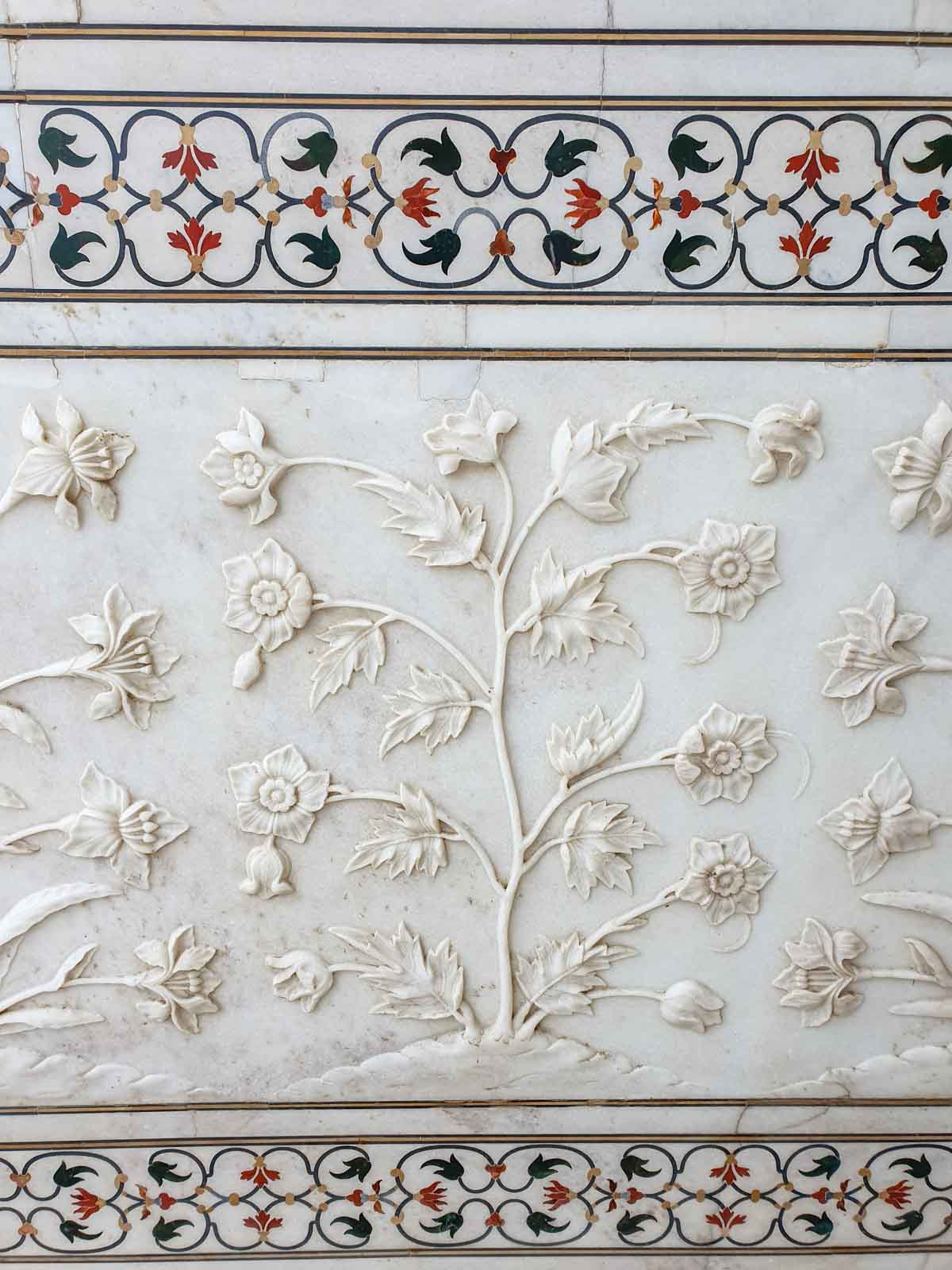
The colourful decorations around the reliefs and arches have been inlaid with around 40 precious and semiprecious stones such as lapis lazuli, rubies, sapphire, jade, and jasper. These have come from all over the world including a rare abalone shell that is only found in New Zealand.
It was honestly such a highlight to visit the incredible monument that is the Taj Mahal, photos go some way to expose its grandeur, but it has to be seen in person to believed. A risk with a place like the Taj Mahal is its reputation can precede it, which can have the effect of setting expectations unrealistically high. But my expectations were both high and met.
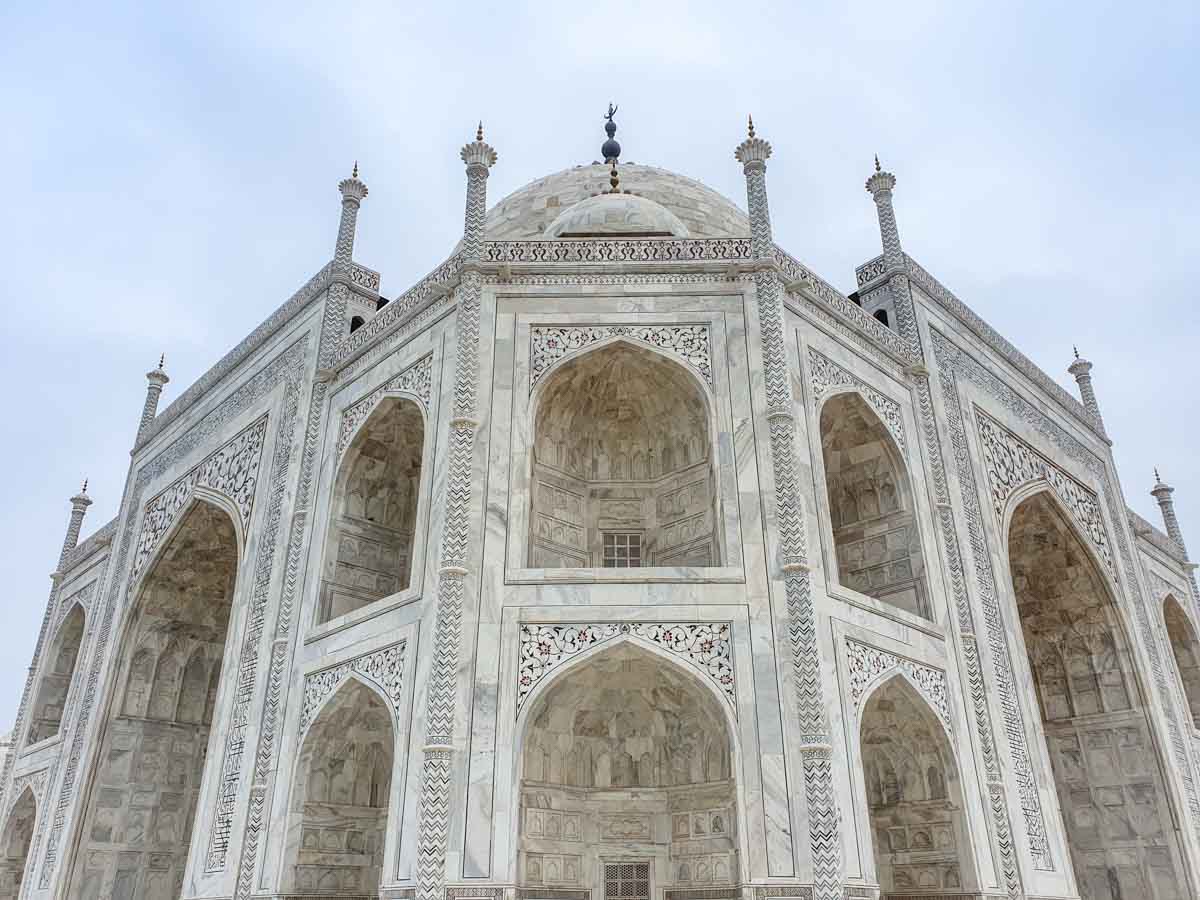
Fatehpur Sikri
Fatehpur Sikri was built by Admiral Emperor Akbar, the same king that built Agra Fort. Akbar moved the Mughal capital from Agra to Fatehpur Sikri in 1571 after a local sheikh predicted the birth of his son after he had lost several. However, it was soon abandoned due to difficulty in maintaining water levels.
The city is surrounded by a wall 6km in circumference. With the exception of the city palace, the city is now mostly thick green scrub, where the peasants might have lived and worked. When you visit Fatehpur Sikri you actually visit the emperor’s palace. Unlike the Agra Fort, Fatehpur Sikri (the palace) is built entirely in red sandstone including the ground. It includes many fine examples of ornate stone carving skills.
Although much of the adornments, and paintings have been lost to vandalism and fading over 4 centuries, remnants remain that hint of its past splendour.
As you pass through the gate you are welcomed by a large field with a viewing deck — the diwan-i-aam — from which the emperor would, among other things, watch convicted criminals be trampled by elephants. How grim.
The palace gave a beautiful insight into the lives of the royals and nobles that lived here. The public and private meeting halls were well-preserved, and, while green, the tansen chabutra pools hint at the courtyard’s former glory.
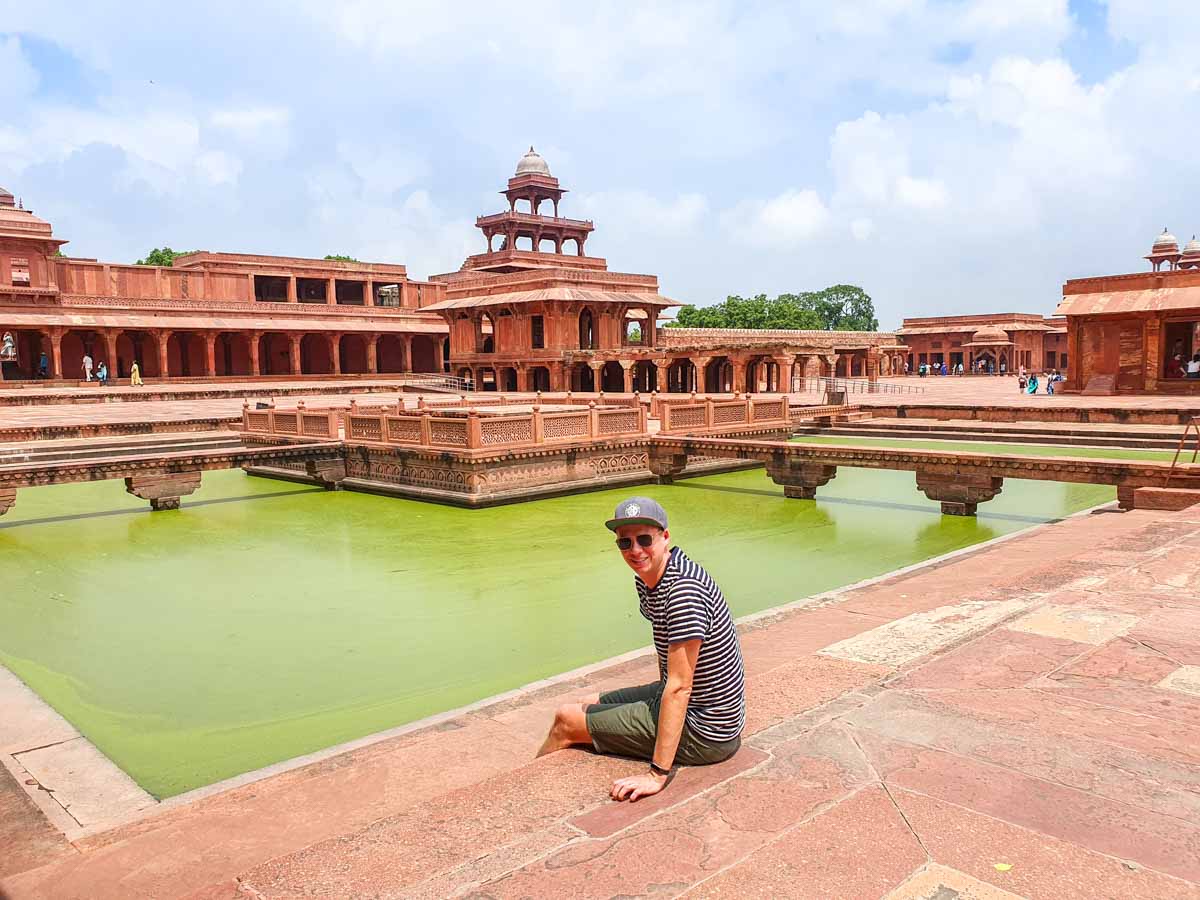
Behind the Fort of Fatehpur Sikri lies the Jama Masjid — or Friday Mosque — built in the typical Mughal style with large archways, domes, without minarets and almost completely in red sandstone. Also part of the complex is the equally impressive Buland Darwaza, an imposing gate giving access to the mosque and palace from the south side. The Jama Masjid and contents is arguably the jewel of the entire complex so when you visit make sure you see it.
Lunch at Motel Gangaur
Another butter chicken at a roadside restaurant, much more tomato-y this time. It’s interesting, at home butter chicken pretty well always tastes the same but that’s not so in India. I had a paratha on the side instead of naan.
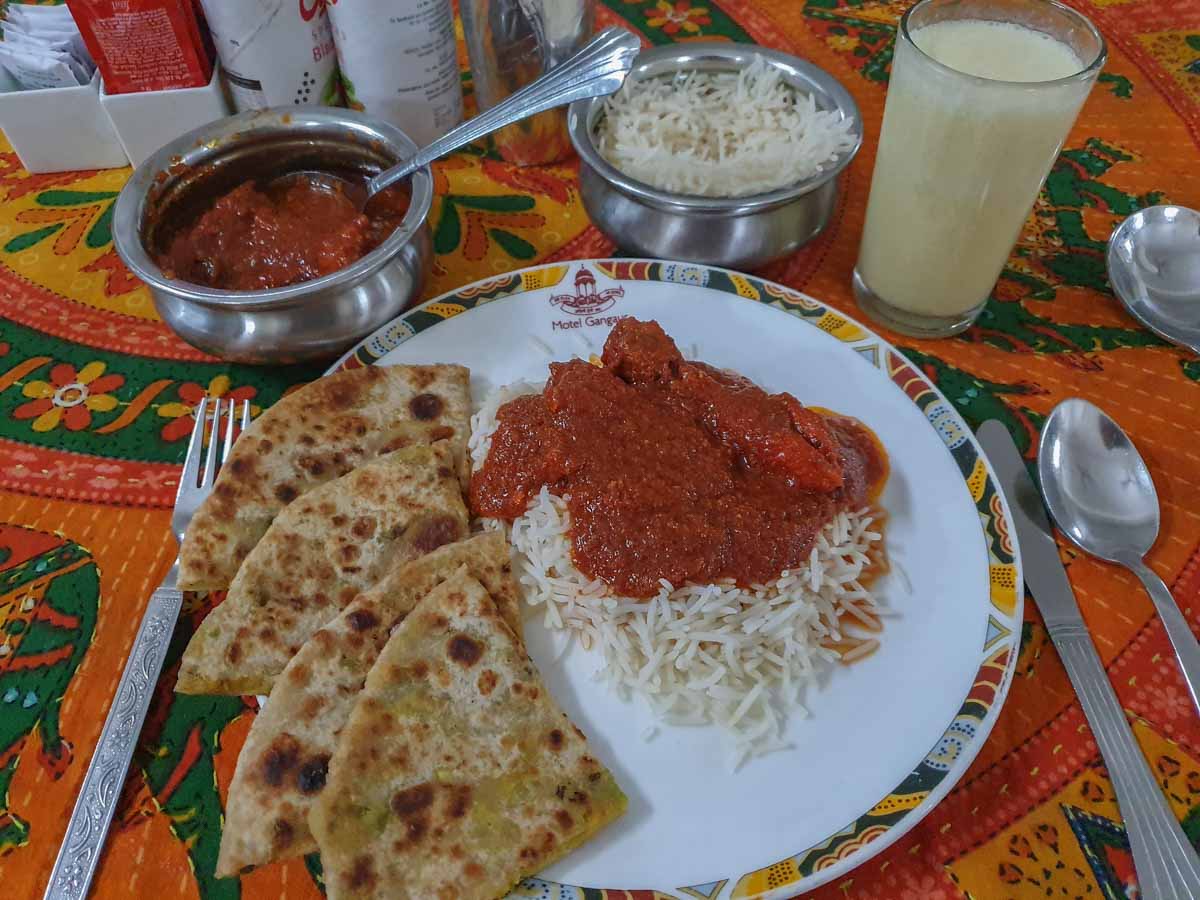
Chand Bawri Step Well
We were running well ahead of schedule for some reason (And no, not because I’d been running my tour guide flat out since 5:30 am), so Sandeep, my driver, suggested we stop off at a monument not far off the highway. This was a solid suggestion and since I wasn’t entirely sure how I’d kill a few hours in the evening in Jaipur it sounded perfect.
So knowing nothing about the monument except that it was 1000 years old my expectations could not be lower. I pay my 300 rupees, round the corner and to my astonishment, a labyrinth of crisscrossing steps that descend down into the earth opens out in front of me. On the fourth side was what looked like a five-story high temple etched into the stone face. It was incredible, the whole structure began at land level and dropped away into the earth.
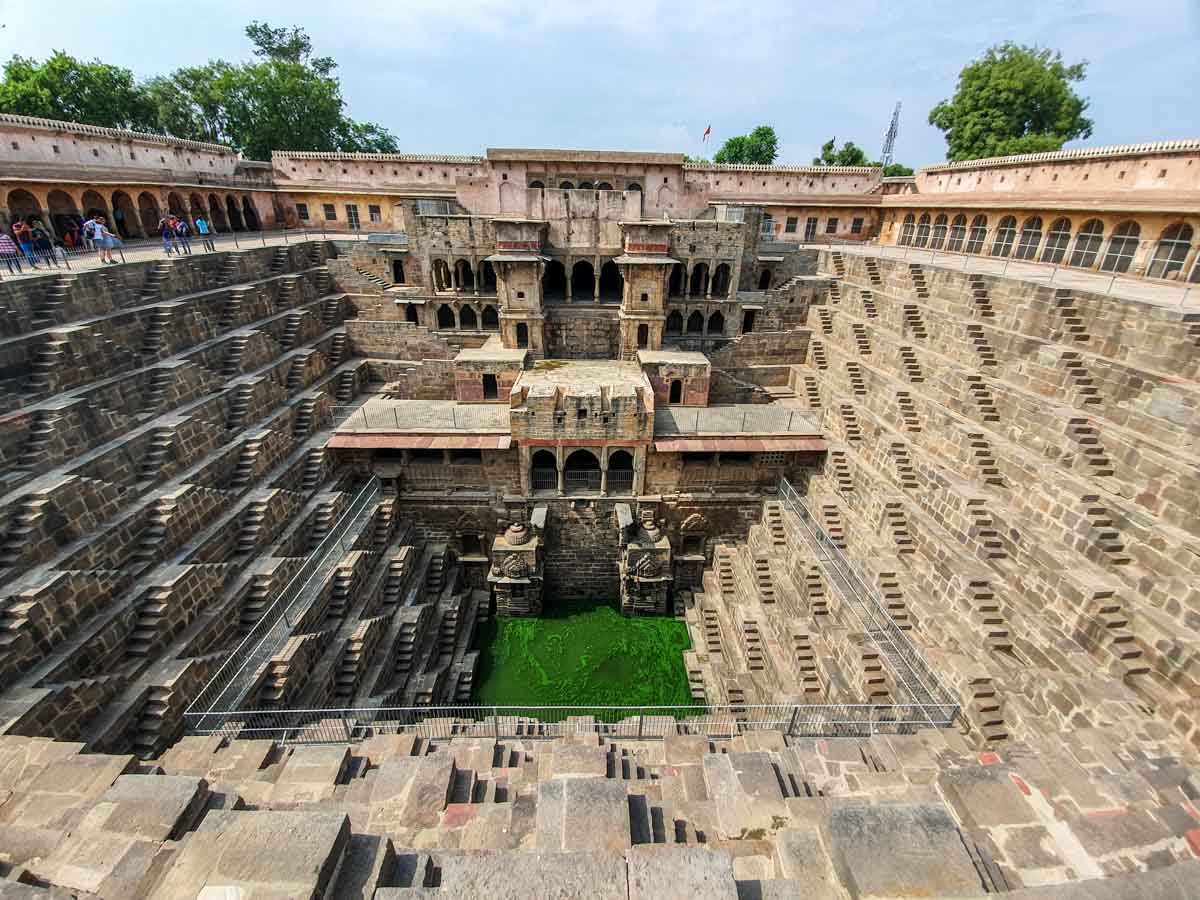
Stay: Hilton Jaipur
I checked into the Hilton Jaipur and ate for dinner, at their own restaurant, what they call Daal Bati Churma and Roomali Roti. It was a selection of doughs and breads that you combine with a variety of curries and sauces. It tasted good and was accompanied by some live traditional Indian music.
Day 4 — Jaipur tour
I had 1 and a half days in Jaipur which was a good amount when on a time budget. Jaipur is known for its old city, or the walled city, or the Pink City. The city was first painted pink for the visit of Prince Albert from England. Not only is pink supposedly a welcoming colour, but it also was to hide the shoddy materials and/or workmanship of the buildings at the time. These days it’s really more of a clay colour but the tradition has remained and some of the facades are indeed exquisite.
Albert Hall Museum
The first stop on the tour was Albert Hall Museum, just a couple of blocks from the Pink City New Gate. The Hall was built in honour of Prince Albert on his visit to Jaipur, during which he laid the first stone. Albert Hall, its footpath, and airspace are all covered in a blanket of pigeons. What started out as a small flock a few decades ago has — as a result of constant feeding by locals and visitors — turned into an insane coverage.
Love it or hate it they seem here to stay. Personally, as someone who doesn’t have to endure these pigeons every day, I thought it was pretty cool and enjoyed taking photos of them flying around the building.
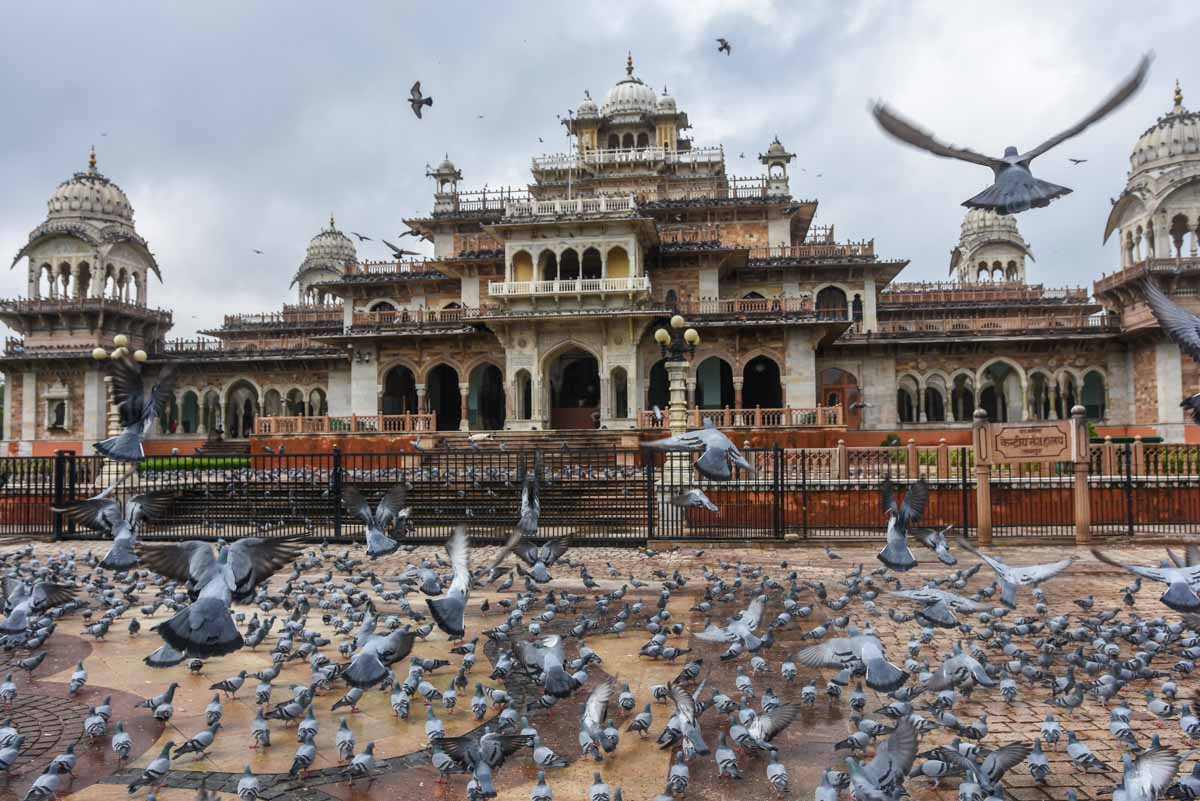
The Pink City
Jaipur is one of the best-planned old cities in the world. It is laid out in a grid divided by 9 roads each way with very wide streets; impressive foresight for such an old establishment. It is known as a shoppers paradise with bazaars as far as the eye can see.
Just like in Delhi, the bazaars are clustered together by type. You’ll find a textbook market (to service the nearby universities), textiles, camel leather, fabric, apparel and a wealth of jewellery stores.
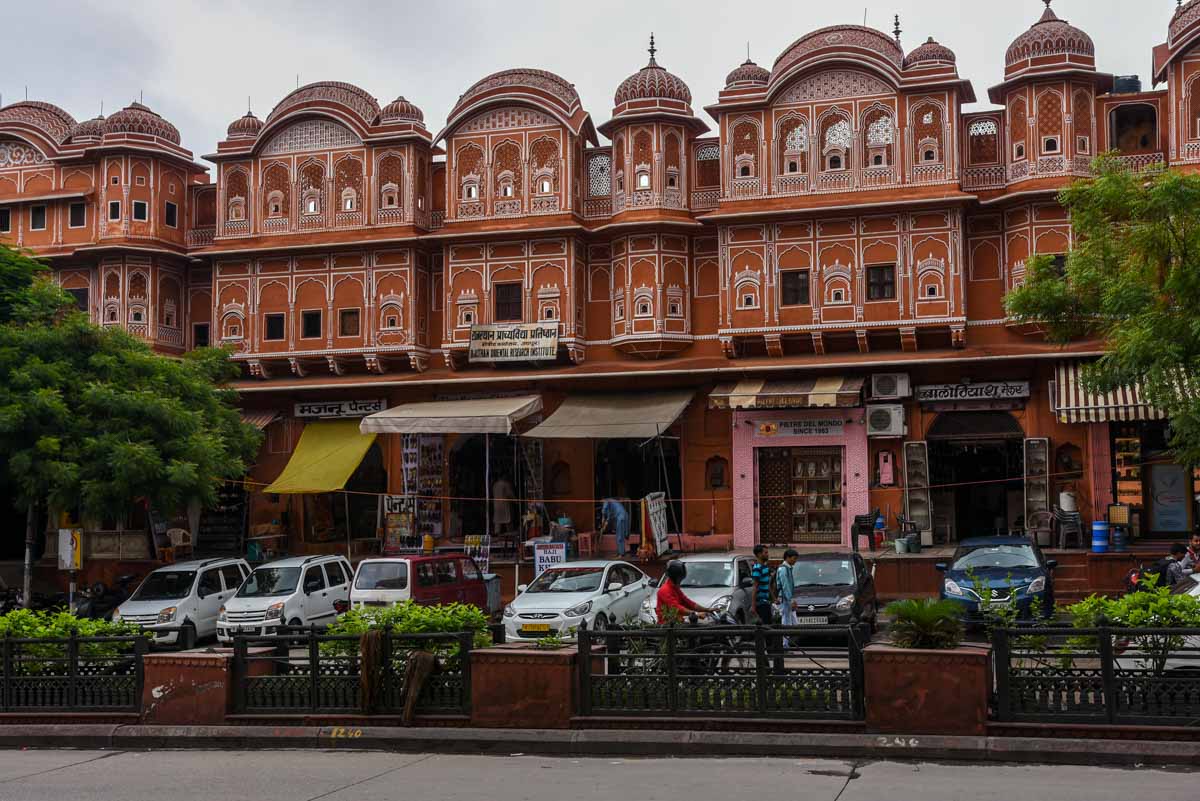
The centrepiece of the Walled City is the City Palace. At one end of the palace sits the Hawa Mahal. The Hawa Mahal is an ornate facade used by noblewomen to watch the world go by.
The City Palace is made up numerous buildings and courtyards including the Diwan-i-khas, diwan-i-aam, the ornate Chandra Mahal and the Mubarak Mahal, which is now a museum and gift shop. Take your time as you move from courtyard to courtyard, building to building, taking in the different types of architecture that adorn each.
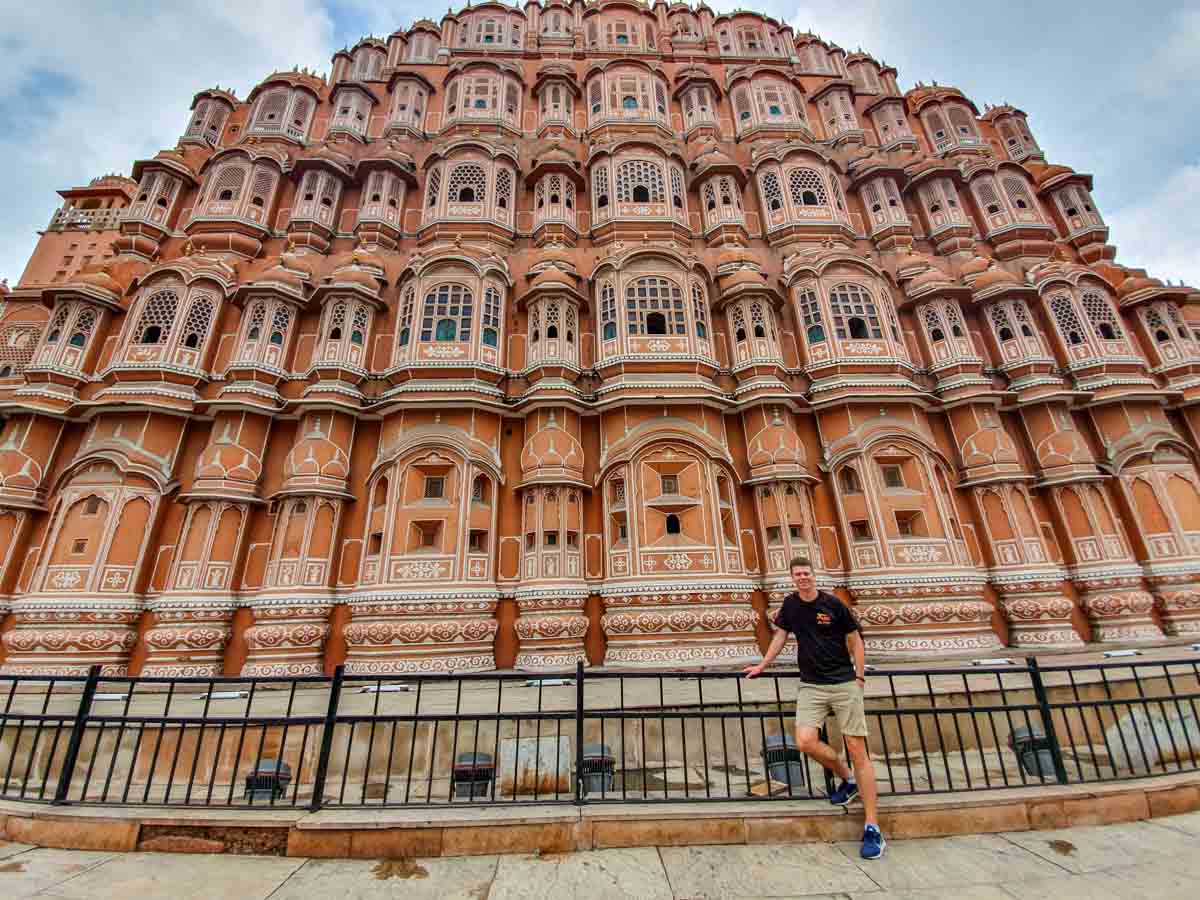
The surprising highlight of the City Palace for me though was the Jantar Mantar, an old planetarium built in the 18th Century to monitor the seasons and the movements of our various celestial bodies. It’s just incredible the knowledge that Maharaja Singh possed to build this.
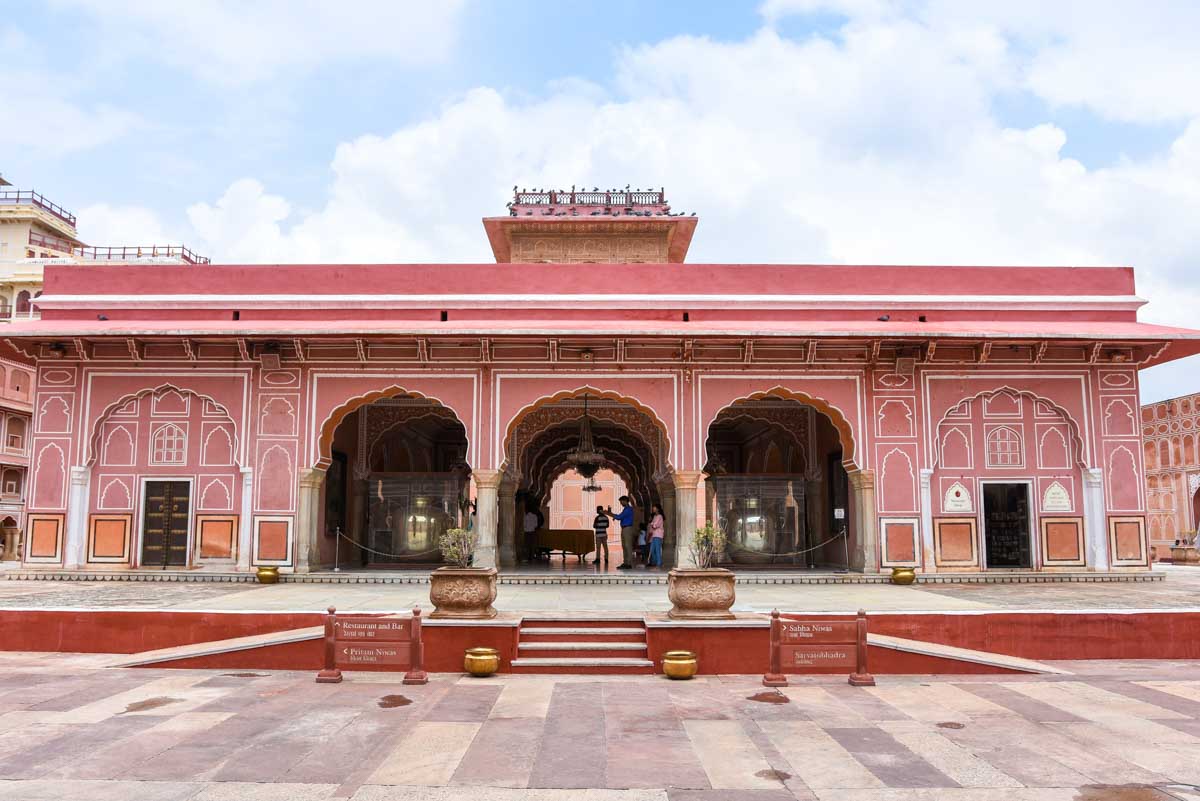
I had a traditional vegetarian “thali” lunch at LMB before wandering the streets of the bazaars, poking into stalls, averting my gaze and taking in the chaos.
Temple Shri Sitaramji, Galtaji (Monkey Temple)
We drove about half an hour out of Jaipur, up into a mountain where a Hindu temple lay. The temple was actually pretty derelict and strewn with rubbish – not a strong start.
Despite this, it is still an active temple and one of the monks actually invited me into his temple where he said he lived and told me a bit about the God on the wall — Vishnu maybe — right before asking for a donation.
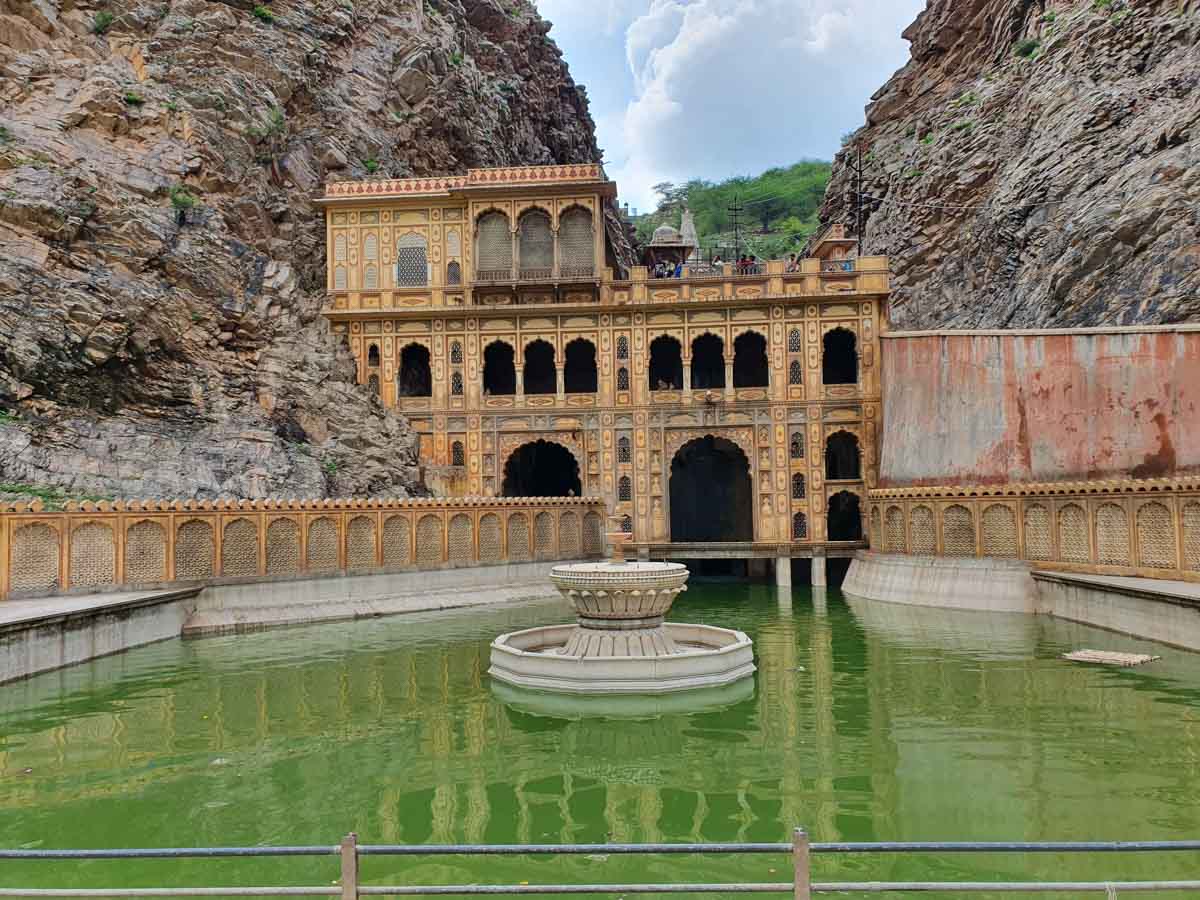
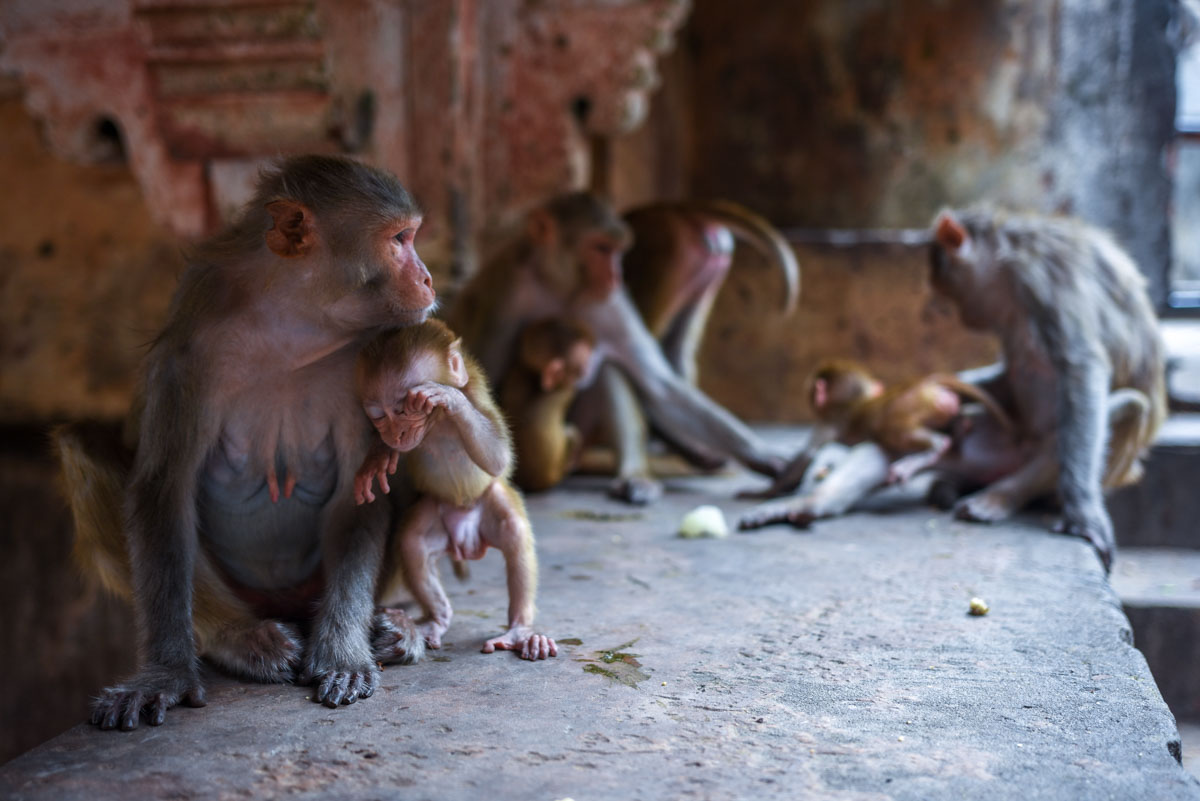
The main monkey part of the temple is built into a crevice between two rock faces. As I walked through what was reminiscent of an ancient ghost town I approached a pond at the foot (pictured above). I walked deeper into the chasm and up to the first tier where there was a green pool with kids bathing in it.
In its day the temple complex would have been magnificent. Today it is still impressive what they have constructed but it does feel like a shadow of its former self. As I ascended up the temple a few monkeys came to say hi, then a few more. Some were breastfeeding mothers, others were simply hungry themselves. Some still were angry with each other and were fighting along the steps. That was fun.
Stay in Jaipur: Hilton Jaipur
Day 5 — Amer Fort, drive to Delhi
Amer Fort
Located about 40 minutes drive from Jaipur, Amer Fort stands strong in the mountains, fortified by a long wall. At the foothills of the fortress is the town of Amer. Much of the town consists of formerly abandoned and derelict buildings that some Indians have begun squatting in and claimed as their own.
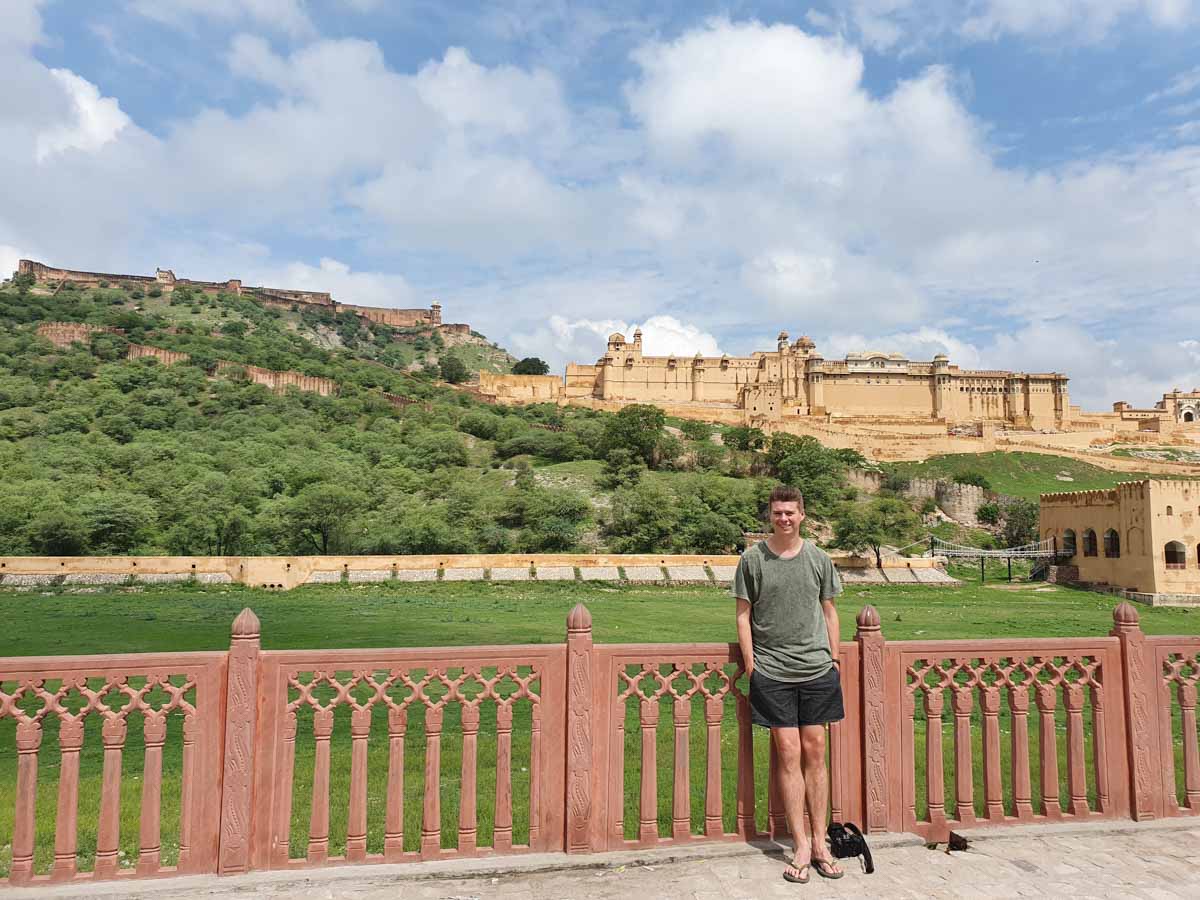
The fort was built by Maharaja Man Singh — the commander of Emperor Akbar’s army. Man financed its construction out of war loot so he must have been good at his job! To get up to the palace from the town below you have the choice to walk up, ride an elephant, or catch a jeep. Or if you have your own driver they will take you up to the Moon Gate, one of 2 entrances, the other being the Sun Gate. It’s called the Sun Gate because it faces east for the rising sun. If you take an elephant it will arrive at the Sun Gate.
The gates sit on opposite sides of a large courtyard where military processions would take place presided over by the Maharaja. Up above, the well-to-do ladies could look down through marble screens with privacy.
We proceeded up a ramp and through a most ornate gate called the Ganesh Gate. In true Mughal style, the gate was covered from top to bottom in intricate patterns, inlaid with precious and semiprecious stones. The gate through to another grand courtyard. On each side was the winter and summer palaces where the imperial family would live depending on the season.
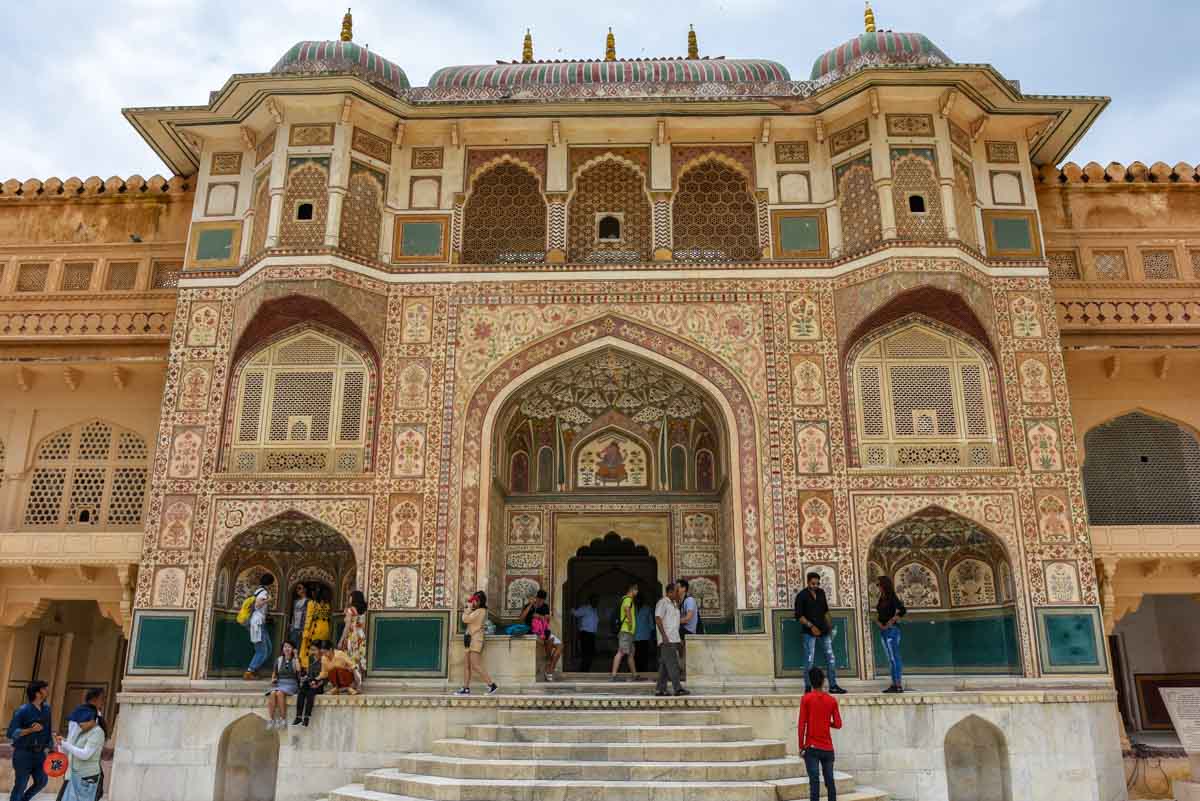
The fort was ingeniously constructed with some very intentional engineering. Because it’s in the desert, the fort is built upon 3 enormous water tanks, filtering one to another. The fort can hold enough water for 10,000 people for 3 years, which comes in handy when it only monsoons once a year and very briefly.
One example of the ingenuity is a pipe that runs around the outside of the palace that has the double effect of cooling the summer palace while also feeding water into the tanks. The ground also drains rainwater from all over the palace down into the tanks; it’s very well thought out.
Anokhi Museum
In the town of Amer, just below the Palace, the Anokhi Museum is set in a restored building founded by a British woman who came to India 50 years ago or so, fell in love with an Indian and the art of block printing. Block printing is an Indian method of printing on fabric using carved wood pieces like stamps. The patterns can be quite intricate in their design and often will involve multiple blocks to fill in different colours of the one pattern.
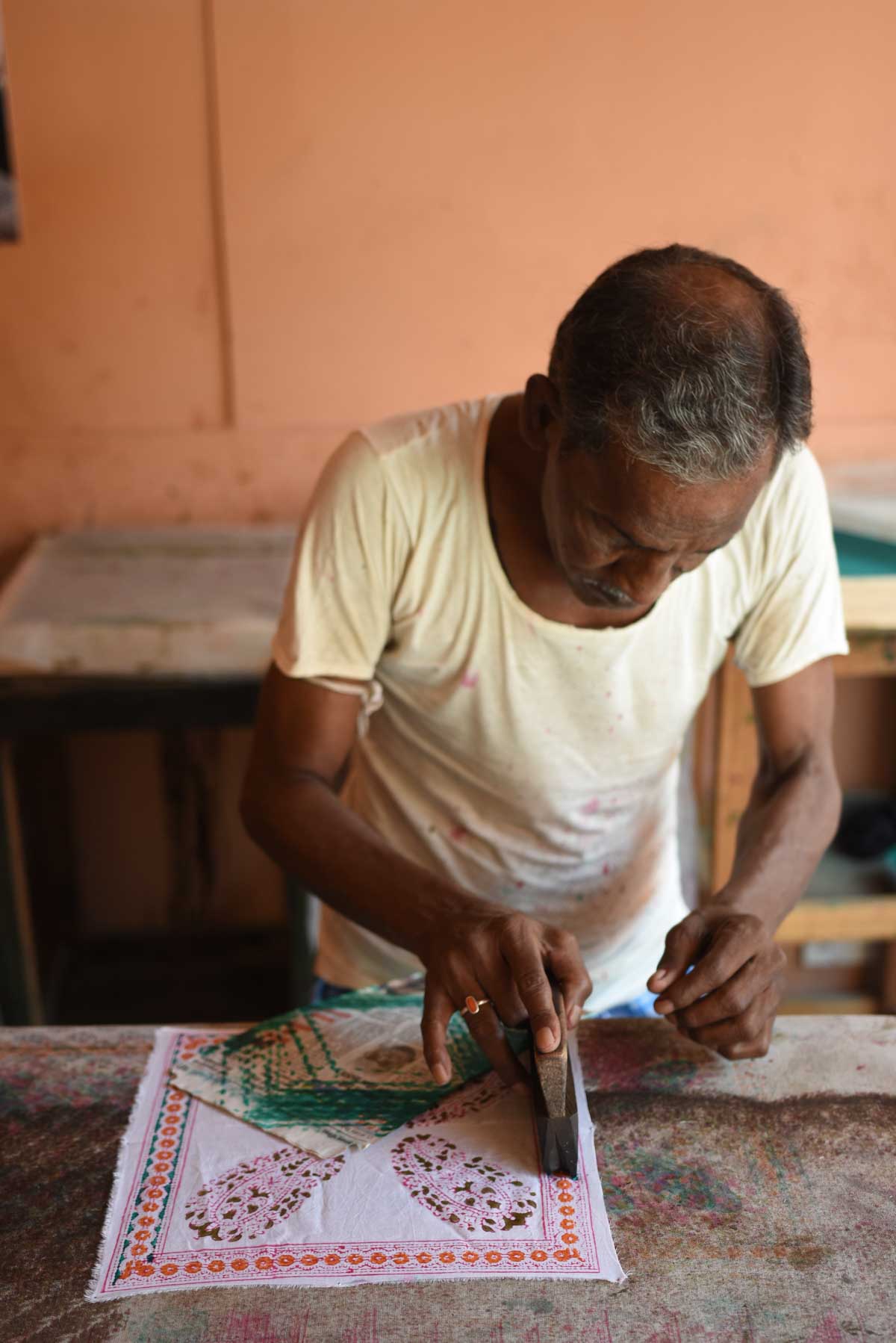
I struggle in even the best museums, so I’ll be honest, for me to feign interest in a very niche textiles museum was a tough ask. However, upstairs there was a demonstration which I did watch. After a few goes, the guy got me involved and then gave me the piece to take home. Woohoo free souvenir!
Hauz Khas village, Delhi
After about 4 hours on the road from Amer we arrived in Delhi around 5pm. My last activity on my 5 day India Golden Triangle tour was to stop by Hauz Khas Village on the way back to the hotel.
Hauz Khas village is a collection of a few alleys near Deer Park with a high concentration of cafes, restaurants and more bars than I’ve seen my entire time in Delhi (there were like 4 or 5 that I saw there). It’s a popular spot for young folk to hang out and be social.
I found a place that had super cheap food almost by accident. In truth, it was the first menu I saw with butter chicken on it and wanting one last hit before I left the country, in I went. I ordered half serves of everything knowing how portion sizes work in this country and I still didn’t finish it, though that may have been from the somersaults the Malaria tablets had been doing in my stomach all afternoon.
I ate what I could and on any other night I would have stopped in one of the pubs for a beer or three. But since I had a driver waiting, and I didn’t really feel like it, I resisted what little urge there was.
Following that I retreated back to the Sheraton for my final night in India; a third of #squadsq now behind me and an early flight in front of me.
As part of #squadsq, my time in Singapore was hosted by Singapore Airlines but the fun I describe was 100% real.
Let’s keep in touch
Sign up for the mailing list below for the chance to become best friends.

